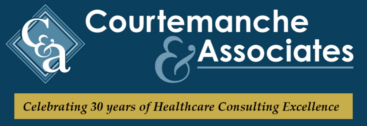As children, many of us were keenly aware of the dangers of monsters lurking under our beds and in our closets at night. Age and wisdom (and sometimes a flashlight wielding parent) soon dismissed these creatures as figments of our own imagination. However, as leaders in healthcare, we should realize that there are indeed monsters under beds, in closets, in ventilation systems and there is a real danger they bring to our organizations and our patients.
Recent healthcare news has demonstrated the presence of mold in facilities and the dangerous impact it brings. Early this year, it was reported that over 50 staff members were sickened by mold in a hospital on Staten Island NY. Mold growth was found behind a sink wall in a Nursery Unit. In Pittsburgh, a hospital experienced five mold related deaths since 2014. Mold was found in the ventilation systems as well as heavy buildup of mold in hospital linens that had not been properly dried by the linen company. Most recently, a children’s hospital in Seattle reported that between 2001 and 2014, seven children developed infections from mold with five of them dying. Aspergillus mold was found in the operating room ventilation system.
According to Health Facilities Management, a publication of the American Hospital Association, the conditions needed for mold development are:
- A host surface, such as carpet, drywall or ceiling tiles.
- Nutrients from organic materials, such as dust and paper.
- Darkness, such as above ceiling spaces or within walls
- Proper temperature range, typically, 40 to 100 degrees F.
- Moisture through flooding, condensation, and plumbing or roof leaks.
Hospitals, with their complex physical plant, provide an ideal environment for mold development. The addition of moisture provides the final ingredient needed for mold to take hold and grow. Therefore, both facility personnel and health care professionals must be constantly vigilant for signs of moisture on ceilings, walls and floors. This includes frequent visual inspections of storage rooms, ice/water machines, HVAC systems, shower rooms, and other locations where mold may thrive. Mold is insidious and can develop in any nook and cranny if conditions are met. Thorough inspection is vital for early identification.
Additionally, organizations should be proactive in addressing uncontrolled water mold-related issues to reduce overall risk by developing a comprehensive water response plan or mold-abatement plan. Best practices, documents and information on addressing mold, mold cleanup and water infiltration events can be found on The American Society for Health Care Engineering, the American Industrial Hygiene Association, and the Centers for Disease Control and Prevention websites.
Have you looked under your bed for monsters lately?

